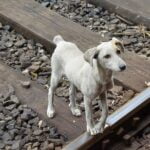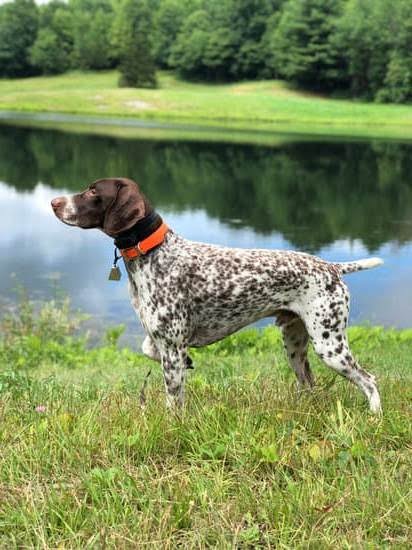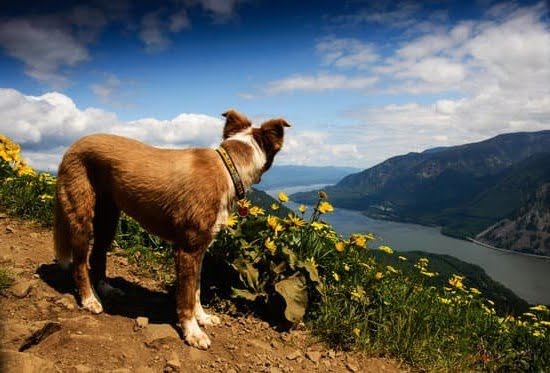Are you looking to learn how to train your dogs to hunt hogs? Hunting hogs with dogs can be a thrilling and rewarding experience, but it requires proper training and techniques.
In this article, we will explore the ins and outs of hog hunting with dogs, from understanding the importance of proper training to choosing the right breeds for hog hunting. We will also delve into basic and advanced training methods, as well as safety considerations, equipment, and valuable tips for a successful hunt.
Hog hunting with dogs has been a longstanding tradition for many hunters, particularly in areas where wild hog populations are prevalent. The use of well-trained dogs can significantly enhance the hunting experience by utilizing their keen sense of smell and natural instincts to track and locate hogs.
However, without the proper training, hunting with dogs can be ineffective and even dangerous. That’s why understanding the fundamentals of training is crucial for any hunter looking to embark on this type of hunting adventure.
In the following sections, we will discuss in detail how to train your dogs effectively for hog hunting, from basic obedience commands to advanced tracking methods. Additionally, we will cover important safety considerations and equipment that are essential for a safe and successful hog hunt with your canine companions.
So if you’re ready to dive into the world of hog hunting with dogs, read on for valuable insights and tips on how to make the most out of this exciting outdoor pursuit.
Understanding the Importance of Proper Training
Proper training is essential when it comes to hog hunting with dogs. Not only does it ensure the safety and well-being of the dogs, but it also contributes to the overall success of the hunt. Without proper training, dogs may not be able to effectively track, locate, and hold hogs, which can lead to a failed or dangerous hunting experience.
Training also helps develop a strong bond between the hunter and their dogs. This bond is crucial for effective communication and teamwork during the hunt. Additionally, proper training can prevent injuries to both the dogs and the hunters, as well as minimize stress on the hogs during the chase and capture.
When considering training methods, it’s important to understand that consistency, patience, and positive reinforcement are key. Dogs trained for hog hunting require firm yet fair handling in order to instill discipline while maintaining trust and respect. It is recommended that hunters invest time and effort into seeking professional guidance or enrolling their dogs in specialized training programs for hog hunting.
| Importance of Proper Training | Benefits of Proper Training |
|---|---|
| Ensures safety and well-being of dogs | Prevents injuries to both dogs and hunters |
| Fosters a strong bond between hunter and dog | Minimizes stress on hogs during chase |
| Contributes to overall success of the hunt | Allows for effective communication and teamwork |
Choosing the Right Breeds for Hog Hunting
High-Energy and Endurance
When it comes to hog hunting, it is important to choose breeds that are known for their high energy and endurance. Breeds such as the American Bulldog, Black Mouth Cur, Catahoula Leopard Dog, and Plott Hound are popular choices for hog hunting due to their stamina and strength. These breeds have the tenacity and physical capabilities to handle the demanding nature of hog hunting.
Natural Instincts
Another important factor to consider when choosing a breed for hog hunting is their natural instincts. Look for breeds that have a strong prey drive and a natural instinct for tracking and chasing. The ability to remain focused on the hunt is crucial, so breeds with these innate traits are ideal choices for hog hunting with dogs.
Size and Agility
The size and agility of the dog also play a significant role in hog hunting. While larger dog breeds such as the American Bulldog are well-suited for engaging with hogs, smaller, more agile breeds like the Catahoula Leopard Dog can effectively maneuver through dense vegetation during hunts. It’s essential to consider the terrain where you plan to hunt, as well as the size and strength of the hogs in that area when selecting a breed for hog hunting.
Basic Training Techniques for Hog Hunting
When it comes to training dogs for hog hunting, it is essential to start with the basic techniques to ensure that your dogs are prepared for the task at hand. Here are some fundamental training methods to consider:
- Obedience Training: Before introducing your dogs to the actual hunting process, it is crucial to establish their obedience. This includes commands such as sit, stay, come, and heel. A well-trained dog will be easier to control and manage during the hunt.
- Scent Training: Dogs have an exceptional sense of smell, which makes them valuable assets in hog hunting. Introduce your dogs to the scent of hogs early on in their training. Use items or materials soaked in hog scent to familiarize them with what they will be hunting.
- Leash Training: Teaching your dogs how to walk properly on a leash is also important. This ensures that they stay close and under control while tracking hogs in the wild.
These basic training techniques serve as the foundation for preparing your dogs for hog hunting. It is important to be patient and consistent when implementing these methods, as every dog learns at its own pace. By establishing a strong training routine, you can set the stage for more advanced training as your dogs progress in their skills.
Remember that building a strong bond with your dogs through consistent training efforts will ultimately lead to a successful and fulfilling hog hunting experience for both you and your furry companions.
Advanced Training Methods for Hog Hunting
Once your dogs have mastered the basic training techniques for hog hunting, you may want to consider advanced training methods to further enhance their skills and performance in the field. These advanced techniques can help improve your dogs’ ability to track, corner, and contain hogs, making them more efficient and successful hunters.
One advanced training method for hog hunting with dogs is using scent tracking drills. By creating scent trails for your dogs to follow and using different scents to simulate the presence of hogs, you can improve their tracking abilities. This type of training can be done in various terrains and environments to prepare your dogs for real-life hunting scenarios.
Another advanced technique is teaching your dogs how to work as a team during a hunt. This involves training them to communicate with each other while on the trail and work together to corner and contain hogs. Teamwork is crucial in hog hunting, as it allows multiple dogs to effectively control and subdue the hogs until the hunter arrives.
Additionally, advanced obedience training can also be beneficial for hog hunting dogs. Teaching them advanced commands such as “leave it,” “stay,” and “quiet” can help maintain control over your dogs during a hunt, ensuring they remain focused on the task at hand without getting distracted or becoming disruptive.
| Advanced Training Methods | Description |
|---|---|
| Scent Tracking Drills | Creating scent trails to improve tracking abilities |
| Teamwork Training | Teaching dogs to work together during a hunt |
| Advanced Obedience Training | Teaching advanced commands for better control |
Safety Considerations and Equipment for Hog Hunting With Dogs
Hog hunting with dogs is an activity that requires careful consideration of safety measures and the use of proper equipment. Whether you are a seasoned hunter or just starting out, it is crucial to prioritize safety for both you and your canine companions. Here are some important safety considerations and recommended equipment for hog hunting with dogs:
- Use protective gear: When hog hunting, it is essential to wear protective clothing such as thick pants, boots, and gloves to prevent injuries from sharp tusks or hooves.
- Always carry a first aid kit: Accidents can happen even in the most controlled environments. Having a well-stocked first aid kit readily available can be critical in addressing any injuries sustained during the hunt.
- Appropriate dog harnesses and protective vests: Equipping your hunting dogs with sturdy harnesses and protective vests serves as a vital safety measure against potential injuries from aggressive hogs.
In addition to safety considerations, having the right equipment can significantly improve the efficiency and success of your hog hunting expeditions. Here are some essential items to consider bringing along:
- Tracking collars for dogs: Utilizing GPS tracking collars for your hunting dogs enables you to monitor their movements and location during the hunt, providing peace of mind and assisting in tracking down wounded game.
- Hunting knives: A reliable hunting knife is indispensable for field-dressing game animals after a successful hunt. Choose a durable blade suitable for cutting through tough hog hide.
- Flashlights and headlamps: Given that many hunts occur during early morning or late evening hours, adequate lighting is crucial for navigating through challenging terrain and identifying targets.
By prioritizing safety considerations and being equipped with the necessary gear, hunters can minimize risks while maximizing their chances of a successful hog hunting experience alongside their trusted canine companions. Remember that staying informed on local regulations and guidelines regarding weapon use, licensing requirements, and land access permissions are equally important aspects of a safe and responsible hog hunting endeavor.
Tips for Hunting Hogs With Dogs
Be Patient and Persistent
Hunting hogs with dogs requires patience and persistence. Hogs are intelligent animals that can be challenging to track and catch. Therefore, it is essential to remain patient during the hunting process. It may take some time for dogs to locate the hogs, so being persistent is key. Encouraging the dogs to stay focused and continue tracking the scent of hogs is crucial for a successful hunt. Remember, training and hunting with dogs takes time and dedication.
Use Proper Equipment
When hunting hogs with dogs, it’s essential to have the right equipment for both the dogs and the hunter. Dogs should be equipped with GPS collars to track their location during the hunt, ensuring safety and ease of finding them when they go off on a chase.
Additionally, hunters should have proper weapons for dispatching hogs once they are located by the dogs. It’s important to ensure that all equipment is in good working condition before heading out on a hunt.
Work as a Team
Hog hunting with dogs requires teamwork between the hunter and their canine companions. Establishing effective communication and signals between the hunter and the dogs allows for better coordination during the hunt.
By working as a team, hunters can effectively track, corner, and capture hogs while ensuring safety for both humans and animals involved in the hunt. Additionally, developing a strong bond with your hunting dogs can enhance teamwork and make hog hunting an enjoyable experience for both you and your furry companions.
Conclusion
In conclusion, the bond between a hunter and their dog is essential in the sport of hog hunting. The trust and partnership between the two are crucial for a successful and safe hunting experience. Training your dog to hunt hogs not only requires skill and techniques, but also a deep understanding of the unique relationship between human and animal.
As discussed in this article, proper training is key in developing this bond. It is important to invest time and effort into understanding your dog’s behavior, as well as utilizing effective training methods. Whether it’s basic obedience or advanced hunting skills, building a strong foundation of trust and communication is vital for the success of hog hunting with dogs.
Furthermore, safety considerations and equipment play a significant role in ensuring the well-being of both hunter and dog during hog hunting. Establishing a level of mutual respect and care for each other’s safety creates a stronger connection between the two partners. Ultimately, the bond formed between hunter and dog goes beyond just the act of hunting; it becomes a lifelong companionship built on respect, trust, and teamwork.
Frequently Asked Questions
How Do I Teach My Dog to Hunt?
Teaching a dog to hunt involves several key steps. First, it’s important to start with basic obedience training to ensure the dog responds well to commands. Then, introducing the dog to the scent of the prey they will be hunting is crucial.
Next, the dog should be trained to track and locate the prey with assistance from their owner. Finally, simulated hunting scenarios can be used to further develop the dog’s hunting skills.
What Is the Best Dog for Pig Hunting?
The best dog for pig hunting is typically a breed with a strong tracking instinct and good endurance. Breeds like the American Pit Bull Terrier, Catahoula Leopard Dog, or various types of hound dogs are commonly used for pig hunting due to their ability to track and hold down large prey.
These breeds also tend to have the strength and stamina needed for hunting pigs in challenging terrain.
How Do Dogs Hunt Hogs?
When it comes to hog hunting, dogs use their keen sense of smell and hearing to track down hogs over long distances. Once they locate a hog, they will often confront it and bark loudly to alert their human counterparts before taking action against the hog.
Some dogs are specifically trained to grip and hold onto hogs until their human companions can arrive on scene, while others may help drive hogs towards waiting hunters using their natural herding instincts. Overall, teamwork between dogs and humans is essential in hog hunting.

Welcome to the blog! I am a professional dog trainer and have been working with dogs for many years. In this blog, I will be discussing various topics related to dog training, including tips, tricks, and advice. I hope you find this information helpful and informative. Thanks for reading!





